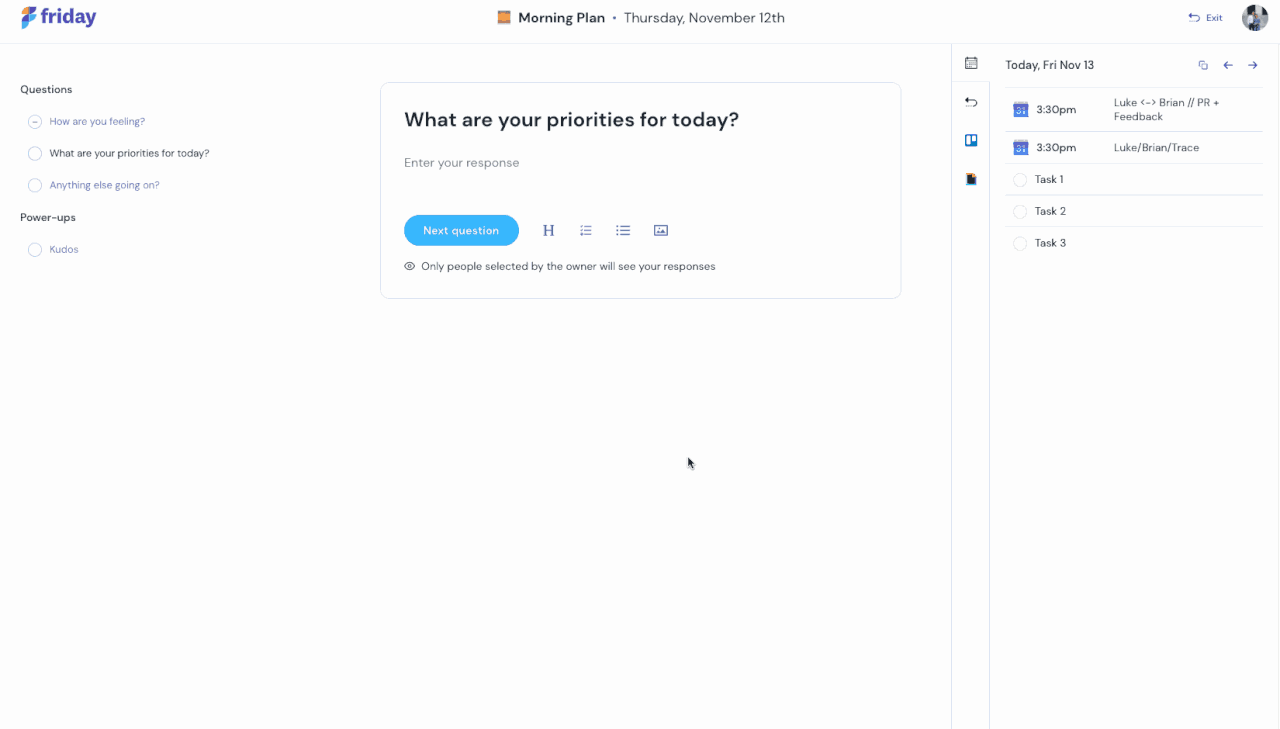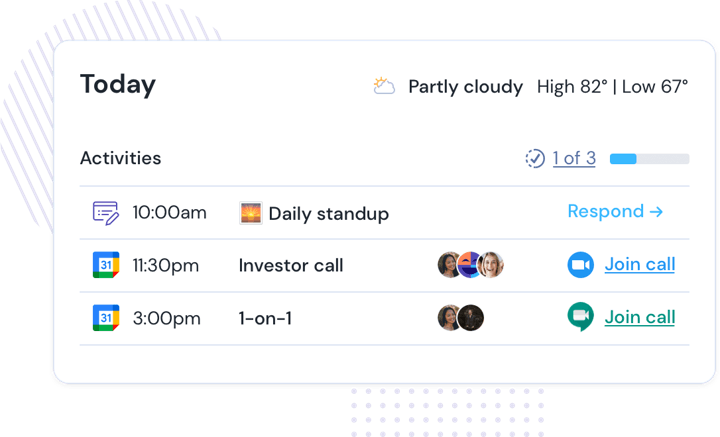7 Best Practices for Remote Teams

There is no doubt that COVID-19 accelerated remote work trends. What may have been considered by some as only an option for digital nomads, it is now estimated that up to 30 percent of the workforce will continue to work remotely or from home by the end of 2021. That’s a huge uptick from the 2.9 percent of U.S. workers who worked remotely in 2017.
With that being said, working from home or remotely is different, especially within a team. There are certain challenges that must be overcome.
The Top Challenges of Remote Work
Isolation & Loneliness
One of the distinctions that’s important to make is that loneliness is an emotional issue, but isolation is a structural one, as Gallup puts it. People can personally make a decision not to interact, even within a remote setting--if the right tools are available.
Compare this to isolation, which occurs when people feel like they cannot access the information that they need, or believe their work does not contribute to the larger good of the company.
This, too, can happen at in-person work environments, but the informal ties may be stronger which overcomes some of the access barriers at home.
Distractions at Home
If it’s not trying to teach children who may be at home due to the pandemic, then it could be online shopping or video games. Facebook, YouTube, and Netflix all saw major increases in usage during 2020. Which means these are constant distractions, along with online shopping or other social media.
Throw in children learning from home or roommates and spouses also working from the kitchen table and you could have major disruptions.
Lack of Visibility
What happens with a lot of teams is that once they switch from office settings to remote work, the flow of informal communication is shut off. In fact, it’s been estimated that 70% of organizational information is part of “grapevine communication” or informal communication networks.
For many companies, this gets completely eradicated once they switch to remote communication. But it doesn’t have to be that way.
In this post, we'll share with you best practices that you can implement for your remote teams to improve communication and collaboration.
Best Practices for Remote & Distributed Teams
If you feel like your company has experienced isolation and loneliness since moving to remote work, you’re not alone. Kate Lister, president of Global Workplace Analytics who has worked with and surveyed hundreds of companies about remote work understands that this has been a huge culture shift.
The concerns and changes regarding remote work should not be dismissed. Emotions--and emotional intelligence--matter at work.
“The biggest problem my clients are experiencing is in keeping their people connected to the company’s mission and purpose. Leaders are worried about cultural erosion and a weakening of connections with colleagues.” – Kate Lister, President of Global Workplace Analytics
How do teams keep the mission front and center while combating isolation, loneliness, and lack of information? What best practices can remote teams use to ensure people are on task even with a boatload of distractions?
Below are seven best practices for teams moving into remote work, or needing to up their game for remote work.
1. Regular Check-Ins and Status Updates
One practice that many teams have is to conduct regular stand-ups or all-hands meetings to connect.
"We host an all-hands meeting with the entire team weekly to make sure everyone is on the same page and knows what everyone else is working on. This ensures everyone is up to date on projects and progress and where they can help each other out when needed," said Dmitri Leonov, the SVP at SaneBox, an AI email filtering software.
More advanced tools have made it easier for teams of all sizes and in multiple locations and time zones to communicate and host a daily huddle, stand-up, or weekly check-in. These have gone virtual and may even be asynchronous.
Using a daily stand-up routine in Friday, you can pick the questions you want your team to answer every day or you can run a weekly check-in at the end of the week.
Stand-up questions usually include:
- What did you do yesterday?
- What will you do today?
- Any blockers?
You can also set goals and align your KPIs within Friday to ensure that each team member is working towards them.
The answers also provide a record of what people said they would do, overcoming any inconsistencies that come from an in-person, verbal stand-up.
2. Create the Right Tech Stack For Communication
Only using email? No way. Email has a lot of value, but the value lies in communication with external parties on a more infrequent basis.
Remote work is enhanced with the proper team communication systems and software. This will take a little bit of investment, but it’s far cheaper than cubicle walls.
Stand-Ups and Goal Setting
As mentioned above, a daily stand-up tool like Friday connects all of your big picture goals with the individual tasks of a project management system and will help you operationalize remote communication. Another top-notch part of Friday? The goal-setting feature. Many teams lose their way over the course of a month or a quarter. Friday lets you set goals/KPIs and then matches the routines to make sure those are achieved. It brings everything together and keeps goals top of mind.
Top Tools: Friday

Video Conferencing
Zoom and video conferencing were around before COVID-19, but they took off during the pandemic, making it a nice-to-have to a must-have. Google Meet is embedded within Google calendar. But another tool that is similar to video conferencing that’s great for asynchronous communication is Loom. Loom allows for quick screen recordings that can then be shared with the rest of the time. It’s a great way to explain a topic without the meeting environment.
Top Tools: Loom, Zoom, and Google Meet
Project Management Software
While a tool like Friday can give you a big picture idea of the goals, team updates, and remote team check-ins, you still need a task management tool or project management software to help you track specific tasks and more granular work. For example: the goal could be to build new product features, but what about the individual parts? That’s a job for project management software.
Top Tools: Trello, Asana, Todoist, ClickUp, Monday, JIRA. Integrate Friday with your favorite project management software!
Knowledge Management Software and Wiki
You need a repository for your company information. And this becomes even more critical when making the switch to remote work. Having a central place for this information helps improve understanding among colleagues, retrieves historical records of company initiatives and strategies, and aligns processes for better collaboration.
Utilizing this in your company alleviates much of the informal communication that can sometimes plague a company when hiring new employees or recapping past initiatives.
Top Tools: Confluence, Guru, Tettra
Team Communication Software
If your team needs a bit more casual atmosphere for communication and instant collaboration, Slack has emerged as the most popular team communication software. Many teams use it for stand-ups and updates as well, but it often gets lost in the noise and the myriad number of channels.
Even if Slack is not your first option, having a similar tool for direct messages, and general communication especially for urgent needs, is indispensable.
Top Tools: Teams, Slack, and Twist
3. Create “Rules of Engagement” For Communication
Once you have your remote team tech stack formalized, it’s time to create rules of engagement for your communication habits. Agree on a set of guidelines to help your team collaborate, such as:
- When to use team communication software vs. when to use email
- The contact person in urgent situations
- Standards for updating in project management software compared to the team communication tool
- Commenting and approval processes
What may be obvious to you in regards to these processes may be totally different than what your colleagues think. This difference can be heightened especially in a remote setting. And, as your company grows and onboards new colleagues, the importance of these guidelines will only grow.
4. Develop Company Culture with Intentionality
Your company still has an identity and culture, even if it is a remote one. In the office, it may have been easier to read facial expressions and moods, but working remotely needs a different approach.
Be intentional when supporting others.
“When working remotely, intention has become so much more important. Are we doing things with intention? In the office, it was 'easy' to tell if someone was off, or needed a pick-me-up. Now that we are remote we have to be really intentional. Intentionally checking in. Intentionally supporting our team. Intentionally trying to bring joy, surprises, and wow moments to a remote team,” said Kevin Dorsey, VP of Inside Sales at PatientPop.
How you approach company culture--whether that’s extra perks like a budget for grabbing lunch or ordering coffee on the company, or building in asynchronous communication patterns to truly let team members travel the world--all of these impact your culture and should not be ignored.
5. Celebrate, Appreciate & Cultivate Social Interaction
Dropping a quick note of encouragement into your team communication software can be a great energizer for team members.
The team at Lessonly has several traditions to encourage teammates and has extended those to the remote work environment.
"At Lessonly, we've always loved celebrating each other. To keep that spirit alive during this season of remote work, we transformed our physical “You Are Awesome” cards into virtual appreciation cards, created a new shout-out channel in our Slack workspace, and now start every weekly team meeting by highlighting each other’s hard work, so we can continue sharing the llama love from our houses. We’ve also found ways to safely deliver goody bags full of our teammates’ favorite things and sent virtual gift cards to their favorite local restaurants for team lunches to keep spirits up and connections thriving.” – Rachel Saltsgaver, Content Manager at Lessonly
Kevin from PatientPop gave his team a budget to purposefully create new and meaningful social experiences. “I gave my managers a budget to spend on the team 'unconditionally', meaning I didn't want it tied to a result of any kind, just do something for them, that will make them smile. No strings attached,” he said.
One thing the team at Rent.com has done is offer games to play together, said Caleb Wright, a senior product manager noting that the Jackbox games have been a huge hit that can be played remotely and via mobile phones. Other ideas may include theme dress-up days, or having pizza delivered to everyone.
How can you include regular encouragement into your team’s workflow?
Friday has a Kudos feature that prompts team members to celebrate and thank other colleagues for what they’ve done. The context of asking this within a regular status update increases the likelihood of sending over friendly encouragement.

6. Keep Meeting Calendars Up-To-Date & Honor The Commitments
Part of remote culture should be having accurate representation of when a worker is available. In most organizations that includes the calendar, whether in Outlook, Gmail, or in another tool.
It’s also a good idea to honor the calendar once it is set. It’s incumbent on remote workers to block off time for focused work, getting lunch, or running errands. They’ll do the work later when they feel refreshed. Which may not be at the same time as the other co-workers because of preferences or time zones.
Managers and leaders need to honor that schedule and only interrupt for truly urgent issues. Managers also need to realize that even in a remote setting, it can be disruptive to add a bunch of meetings to the calendar of a remote worker, hence the classic manager vs maker schedule dilemma.

Asynchronous communication has already been mentioned, but it bears repeating as a remote team best practice.
Don’t look for an answer right away. In fact, you’ll have to wait. True, there are times when remote employees are working at the same time. Those are rare.
Understand and embrace the flexibility of remote work.
7. Create Proper Onboarding
Don’t skip this step! Proper onboarding goes along with uniform communication protocols and operationalizing your remote communications. When new employees arrive, it can be disorienting, especially if there are no clear processes in place for knowledge transfer and initiation. Clear onboarding is more important for remote employees because there aren’t as many opportunities for informal knowledge transfer via a “quick question” to a another employee.
Ideas for onboarding include mentorship for new employees, equipping them with clear organizational mission statements, and conducting regular feedback times to ask questions.
Conclusion: Remote Team Management Requires a Shift in Mindset
One employee will look at remote work as an exciting opportunity to make work better. Another employee may be hesitant to fully embrace it, hoping for something that’s a return to “normal.”
It’s okay to have that spectrum of thought as your company changes and grows. You can mitigate fears by suggesting some of these key remote team practices, getting feedback from your remote team members, and then adapting and growing.
Managing remote employees requires a shift in mindset. And some will be faster to adopt these than others. We created this series on remote mental models to help your team address some of these hurdles.
Part of the goal of Friday is to make remote work better. We have created a solution including a planner and routines to help with managing remote teams and to increase employee productivity and better collaboration.
